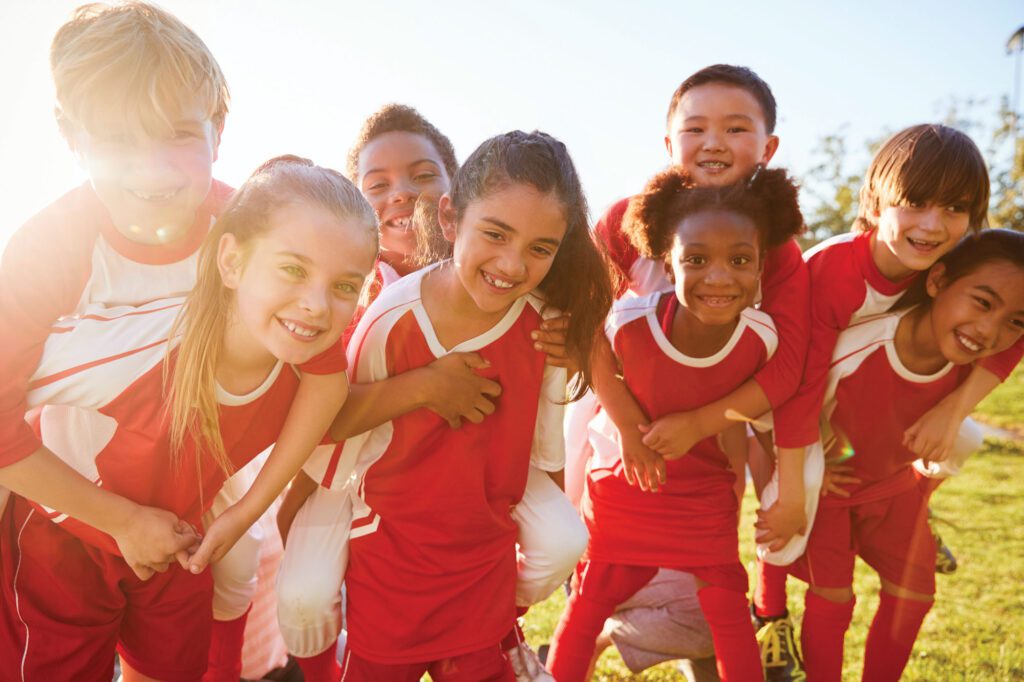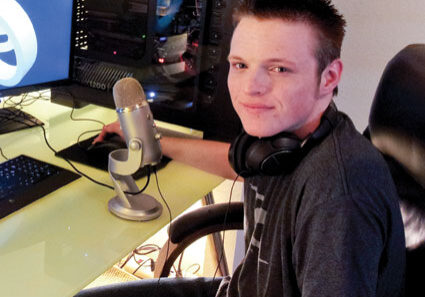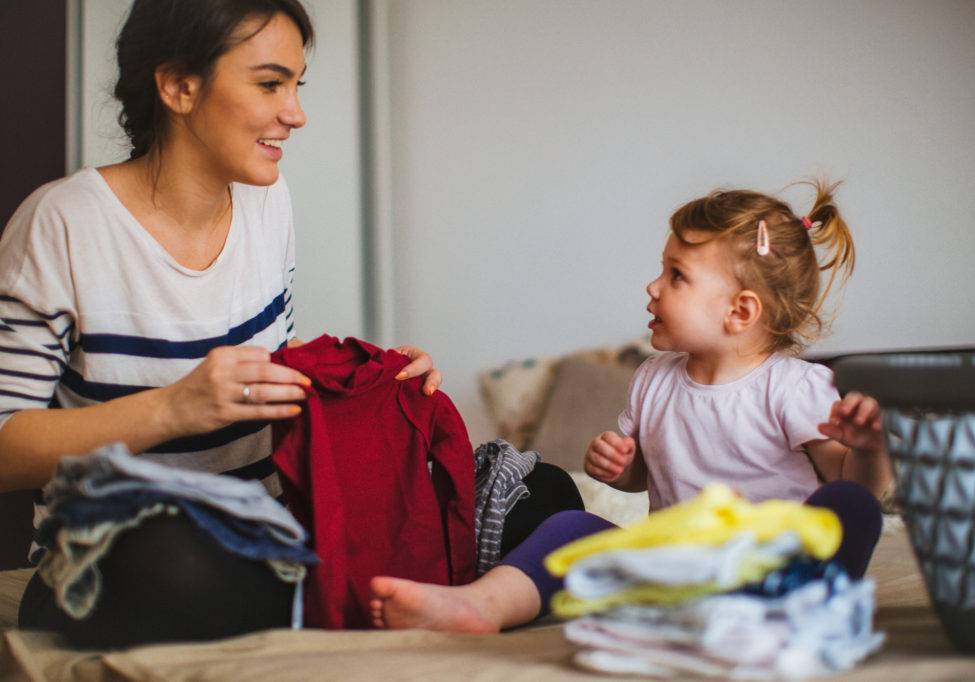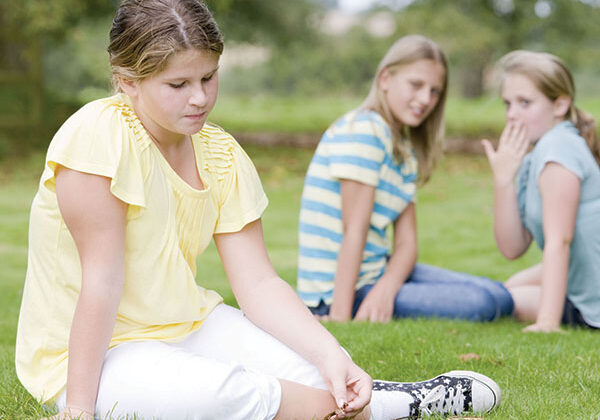At a time when being hooked on smartphones is prevalent in our society, it’s more important than ever to help children (and adults) make physical fitness a priority. But how do you know where to start? Here are some suggestions for how to improve your children’s health that can carry them well into adulthood.
When do kids generally start playing sports?
Children as young as two years old can begin their journey of lifelong fitness. Toddlers and young children ages two to five may be too little for organized sports, but unstructured play like running, dancing, swimming, throwing and kicking a ball may give parents an early sign of their child’s sports interests.
As children grow, their attention span and skills improve, along with the ability to follow direction. Children six to nine may lean toward organized team activities like tee-ball, gymnastics, soccer, martial arts or tennis.
Children 10 to12 have started to form friendships, develop social skills and are generally able to show a natural preference for a particular form of physical exercise. Entering their teen years, they may want to join a team focused on basketball, football, volleyball or hockey.
The key for parents is to expose their child to various activities, pay attention to exercise to which their child seems drawn, support them in their interests and consider how often they’ll get to participate if it’s an organized team sport. Shasta Family YMCA Aquatics Coordinator Cassidy Barry says people of all ages get involved in swimming, soccer and gymnastics at the YMCA, while middle and high school kids lean toward basketball, volleyball, football, track and tennis.


Other choices for kids besides team sports
“Team sports weren’t really his thing – so he found his own way to play,” a Move Your Way flyer says against a backdrop of a young boy smiling as he kayaks with an adult. The Move Your Way initiative promoted through the US Department of Health & Human Services provides suggestions about how to get America’s youth moving to help them strengthen their hearts, bones and muscles while getting the recommended 60 minutes of physical activity in per day.
It is OK if kids resist organized team sports. They can stay active by hiking, kayaking, biking or even playing tag with their friends. The key is to not push children toward specializing in one sport too early, as that can result in stress and burnout down the road.
Expose kids to a variety of activities
A child’s interest in a certain sport often comes from being introduced to it by someone with whom they are comfortable, says Barry. It’s a good idea to introduce kids to all kinds of sports. Besides playing catch, kicking around a ball or shooting hoops with them, you can expose children to a sport by being a spectator. Take them to a football game, a track meet or to the baseball field when Little League games are being played. It’s a great way to spend time with your kids while introducing them to new sports.
Sports can teach kids safety rules
If you live near water, you may want to teach your child how to swim early on so that they can be prepared in case of an emergency. The youngest person on the Shasta Family YMCA Swim Team is four years old, and the team gives swim lessons to children as young as six months old. “In the Redding area we have Whiskeytown Lake, Shasta Lake, the Sacramento River…we’re surrounded by water,” Barry says. That combined with the natural curiosity of children has prompted the Shasta Family YMCA to launch the Safety Around Water course program to help give children confidence in and around water.
Individual versus team sports for children
Some kids will gravitate toward a sport, like basketball, hockey, baseball, football or soccer, where they play a role on a team. Others may be inclined to take part in sports like swimming, track, tennis, golf or gymnastics, in which their own skills matter most. While 100% of the onus for success is on the participant in activities like biking, gymnastic and tennis, it can be rewarding for children to contribute their individual skills with the support and motivation of their team, such as in swimming or track and field.
YMCA of Superior California Oroville branch manager Sarah Pierce, a basketball coach and Oroville Orcas Swim Team coach, says that sports that involve joining a swim team or track are activities where kids aren’t reliant on each other to succeed, it’s more fun to do it with other people and some children tend to do better in these types of sports.
Kids in sports help build parent communities
When asked if many parents stay at the YMCA and work out or participate in activities with their children, Cassidy Barry at the Shasta Family YMCA says that though a few parents decide to leave while their child is participating in activities, most parents will sit together and build community. “There was a group of swim moms who were all pregnant at the same time this past summer and they have built such an incredible village. It was beautiful to watch. Now we have babies crawling around on the pool deck and so many more smiles,” she says.
Physical fitness opportunities for kids in the North State
There are all kinds of ways to get kids involved in sports in your North State community. Northern California Little League Baseball clubs accept children as young as four years old for tee-ball and Pop Warner football. Shasta Roller Hockey League has four divisions for ages 4-16 and there are no bench warmers in this league – all kids get to play in all games through a timed rotation system. Ice hockey and ice skating are great winter sports and Siskiyou Ice Rink offers both.
Girls on the Run uses a curriculum in its after-school programs that inspires its young ladies to recognize their inner strength, encourages empowerment and helps girls gain confidence as well as increase their level of physical activity. Girls on the Run North State operates in 11 Northern California counties from Lassen to Trinity.
Local recreation centers and schools can also help get the whole family involved in a physical activity. Along with its swim team, the Shasta Family YMCA offers a Little Dribblers basketball workshop for ages 6-12 in which kids practice dribbling drills, play skirmish games and learn sportsmanship skills.
No matter what kind of sport you or your child pursues, the key is to get moving and make the No. 1 priority having fun. When children start exercising in a positive and safe way, it can lead to better sleep, a better mood and better grades. In addition, children pick up life skills that they apply outside of sports such as learning teamwork, leadership and work ethic.
Posted in: Recreation & Sports, Youth & Teen
Comment Policy: All viewpoints are welcome, but comments should remain relevant. Personal attacks, profanity, and aggressive behavior are not allowed. No spam, advertising, or promoting of products/services. Please, only use your real name and limit the amount of links submitted in your comment.
You Might Also Like...

Taking Care of Business: Teens Put Their Talents To Work
You needn’t be an adult to make an impact on the world. Encouraged and guided by parents and teachers, young people can use their education in creative ways: solving global […]

Trains And Model Railroading-Fun For Girls And Boys
November is National Model Railroad Month, so now is a great time to visit your local train museum. All 50 states have one or more train museums, many featuring full-size […]

Helping Your Child Develop Independence
As a mom of kids ranging from 2 to 12, I realize how quickly time flies. I love watching them grow, try new things, and discover their passions. As a […]




